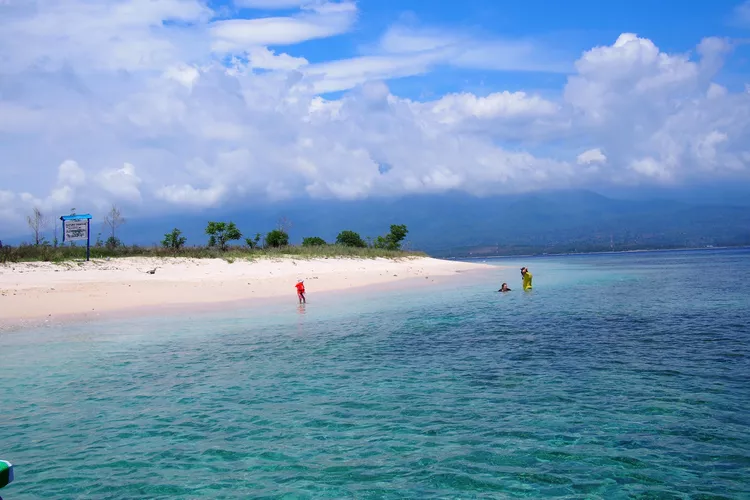Summary
Labuan Island, or Pulau Labuan, is a small, duty-free island situated just off the coast of Sabah in Borneo. Despite its proximity to Borneo’s bustling tourist hub Kota Kinabalu, Labuan Island remains surprisingly unexplored by Western travelers. The island offers tax-free prices and serene beaches, creating a friendly and hassle-free environment.
In addition to its secluded beaches, vibrant nightlife, and affordable shopping experiences, there are numerous attractions on Labuan Island to explore. Most spots on the island are free to access and can be easily reached by bicycle, bus, or rental car.
1. Deserted Beaches
Labuan Island’s west coast boasts undeveloped, tranquil beaches complemented by peaceful parks and esplanades. Even on weekends, these beaches tend to be mostly empty, providing an ideal spot for relaxation.
The gorgeous six-mile stretch of sand, from Layang-Layangan Beach to Surrender Point, earned the UN’s Cleanest Beach Award in 2008. Despite the industrial area and water quality at the port, the island’s beaches remain pristine, inviting visitors to take long strolls.
Pancur Hitam Beach and Pohon Batu Beach, located in the north, feature picnic areas and public restrooms. These beaches are rarely crowded on weekdays, allowing you to create fresh footprints on their fine sands!
2. Labuan Marine Museum
Located just east of the city center, the Labuan Marine Museum is situated within the International Sea Sports Complex. This museum showcases a fascinating collection of artifacts from shipwrecks and both live and preserved sea life. Families will appreciate the child-friendly exhibits, including an aquarium where children can interact with live sea cucumbers and starfish.
Admission is free.
3. Labuan Museum

The Labuan Museum features two floors of captivating displays that delve into the history and culture of Labuan Island. Visitors can learn about the island’s significant role in World War II, the coal mining that drew British rule, and local customs.
Some exhibits even include prehistoric artifacts discovered on the island. Admission is free, and the museum is housed in an elegant colonial-style building opposite Labuan Square in the city center.
4. Water Village
Although not as extensive as the world’s largest water village located in Bandar Seri Begawan, Labuan’s water village is equally intriguing. A network of bridges, walkways, and wooden planks connects homes and markets perched on stilts.
The village was originally settled by fishermen from Brunei, traders, and sailors. Visitors can experience homestays that provide a firsthand look at life on the water.
Situated just a few minutes northwest of the city center, admission to the water village is free.
5. Botanical Gardens

Once the site of Labuan Island’s Government House, the beautiful Botanical Gardens are now a serene retreat filled with winding paths and lush greenery. Within the garden is a small graveyard, dating back to 1847, which is the oldest on the island.
Located just a mile northeast of the city center, admission is free.
6. Labuan Bird Park
While the Labuan Bird Park may not compare to the more polished Kuala Lumpur Bird Park, it still offers a delightful experience. Visitors will enjoy interactions with the lively and entertaining mynas amidst an array of fascinating bird species.
Attractions within the Labuan Bird Park include brilliant hornbills, majestic eagles, and large ostriches.
7. The Chimney

Labuan Island’s prominent chimney stands as a point of pride for its residents, even though its exact purpose remains uncertain. Built in the late 1800s from red bricks brought in from England, the 106-foot tall structure was once thought to serve as a ventilation shaft for nearby coal mines. However, recent investigations have found no signs of smoke within its confines.
The site includes a museum detailing Labuan Island’s coal mining history, situated in the northern part of the island, approximately eight miles from the city center. Admission is free.
8. World War II Memorial

The largest war memorial in Malaysia, dedicated to honoring the soldiers who liberated Borneo, marks a significant point of remembrance on Labuan Island. The names of 3,908 soldiers from Australia, England, India, Malaysia, and New Zealand are inscribed on the walls, detailing their ranks and units.
A formal military remembrance ceremony is held annually on November 11 or the closest Sunday. The memorial is conveniently located just two miles northeast of the city center, with free admission.
9. Peace Park
Adjacent to Surrender Point lies the Peace Park, a landscaped memorial established in collaboration with the Japanese to commemorate the end of war. A large monument, written in both Japanese and English, delivers a simple yet profound message: “peace is best.”
The park features two large arches, serene ponds, and impeccably manicured grounds, making it a perfect spot to escape the heat and enjoy a peaceful picnic. Located seven miles from the city center on the west coast, the Peace Park is a picturesque retreat for visitors.
10. Surrender Point

Labuan Island was under Japanese occupation during World War II until it was freed by Allied forces. The official surrender of the Japanese Army occurred on September 10, 1945, signifying the end of a harrowing chapter in Borneo’s history.
A grand stone monument and beautiful coastal park now mark the location where the Japanese army concluded their campaign. Surrender Point is located seven miles from the city center and is also free to enter.





